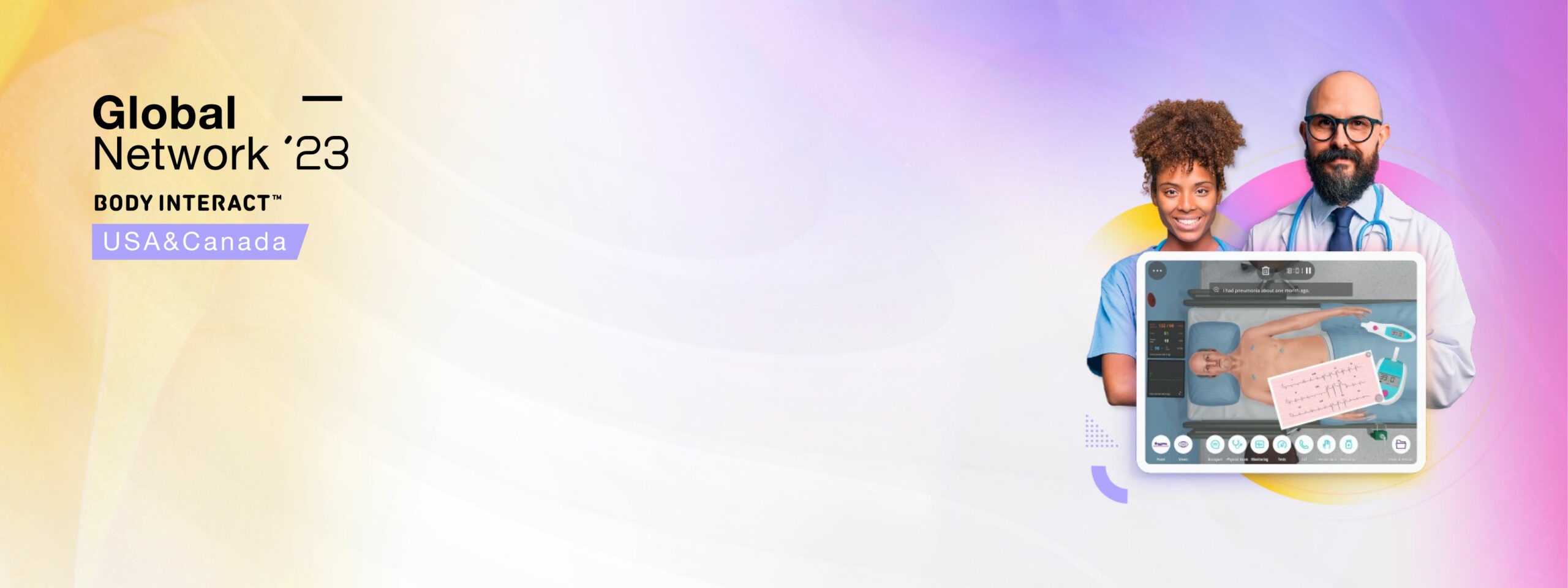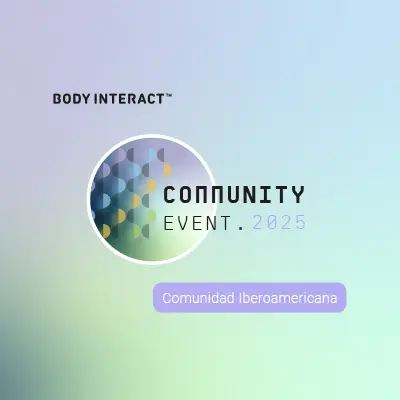Virtual Patients are becoming increasingly popular in healthcare education. Its effectiveness in promoting critical thinking and providing hands-on experiences has been widely recognized by educators and healthcare professionals.
The Body Interact USA & Canada Community held its first event on February 21, 2023, which brought together five leading Educators who shared their valuable experiences and best practices on how they use Virtual Patient Simulation in various programs, such as secondary education, pre-med, EMS, Nursing, and Medicine.
Each speaker shared innovative didactics and practical tips with the community, making the session truly inspiring. Check out the presentations from each speaker below!

John Stone, MD, Ph.D.
Teaching Holistic Patient Care
Medical Education | Creighton University
John Stone (MD, Ph.D.), Professor at Creighton University, shared his experience using Body Interact in a presentation entitled “Patient as Person, Doctor as a Team Member.”
In his talk, Dr. Stone discussed his approach to using simulated patient work at two levels: high school/undergraduate and post-Baccalaureate.
- Prior to class, students are notified which patient they will work with and have the opportunity to train in advance
- At the post-session, a facilitated debriefing is conducted to discuss different points of view and findings and debate further objectives.
Creighton University instills in students the need to approach each patient with a holistic sense. To further develop this skill, the professor also uses the Virtual Patient Simulator to explore important questions related to patient safety, privacy, and communication. He highlighted the importance of being mindful of tone/mood, language, and body position when caring for patients.
Body Interact allows students to structure self-learning and recognize that respect and care must be privileged.
Dr. Stone finished with the statement “Right answers are not the objective; it is to think deeply.”

Kimberly Whitten-Chung, MEd, NRP
Innovative Flipped Classroom Approach
EMS Education | Pikes Peak State College
Kimberly Whitten-Chung (MEd, NRP), Director of EMS Education, shared with us her perspective on how to integrate Body Interact into EMS Programs.
Drawing from scientific literature, she highlighted how using a life-like environment such as Body Interact – Virtual Patients can promote safe practice and enhance clinical reasoning skills. By using the virtual patient software, students develop core competencies in patient-centered care, communication, and scientific literacy.
According to the Professor, Body Interact is applicable at each level of EMS provider training because it can be matched with the EMS curriculum.
At Pikes Peak, they have adopted a flipped classroom approach where students complete Pre-Work outside of class, access Body Interact scenarios, and then the training on psychomotor skills. The multitude of scenarios available allows students to learn and train beyond the limitations of traditional field settings.
To wrap up her talk, Kimberly shared the next steps in her institution – integrating Body Interact for interdisciplinary team training.
We are curious to see how that will turn out!

John Giannini, MD
Virtual Patients as a Teaching Modality for Clinical Reasoning and Debriefing
Medical Education | Alabama College of Osteopathic Medicine
John Giannini, MD, honored us with his expertise, shedding light on the potential of Virtual Patients as a Teaching Modality for Clinical Reasoning and Enhanced Debriefing. At Alabama College of Osteopathic Medicine (ACOM), students participate in weekly simulation encounters where they tackle Body Interact scenarios that correspond to their current stage of education.
It is critical to teach clinical reasoning early on in medical school, ideally beginning in the first year, for students to have a thorough understanding of the clinical reasoning process before their clinical rotations. Body Interact enhances and develops these skills and serves as a valuable tool for assessment and debriefing.
Debriefing is particularly important in medical simulation as it provides students with an opportunity to reflect on their actions and thought processes, ultimately enabling them to gain a better understanding of their own experiences.
ACOM integrates Body Interact into other learning activities such as independent learning activities assigned periodically to pre-clinical students, remediation tools for clinical skills, assessment tools to assess the readiness of the 4th year students for residency, online activities in locations across the US conducted at the same time, and an excited in-house competition.
Additionally, future plans at ACOM look like providing 3rd-year student Body Interact scenarios to work through after each rotation to enhance board score. After all, as Dr. Giannini aptly concluded, “It’s not about being right or wrong; it’s about knowing how to think.”

Lyndsey Brooks, MSN, RN, NPD-BC, CHSE
Meet the NCSBN Clinical Judgment Model and Enhance Critical Thinking and Decision-Making
Nursing Education | St. Elizabeth School of Nursing
During her presentation, Lyndsey Brooks (MSN, RN, NPD-BC, CHSE), Nursing Educator at the St. Elizabeth School of Nursing, focused on how Body Interact can be used in conjunction with the NCSBN Clinical Judgment Model to better prepare nurses for real-world challenges and enable them to provide optimal patient care.
Developing strong critical thinking and decision-making skills is crucial for nurses during their training, and the NCSBN provides a useful tool for assessing clinical judgment. However, bringing the model into the classroom has presented challenges, which Body Interact has helped to overcome by providing scenarios that allow for each step of the model to be explored in depth.
Professor Brooks dynamizes classes using a “case study” approach, where scenarios are carefully chosen to match exemplars, and the simulation is controlled by faculty while students make decisions. Following the simulations, debriefing is guided following the Body Interact post-simulation feedback.
In clinical makeup assignments, students are assigned scenarios to solve at home and must complete a worksheet. During in-house clinics, they rotate between the Body Interact table and classroom projector, culminating in training psychomotor skills when using Simtegration (coming virtual patients with other simulation tools).
Feedback from students has been very positive, and Lyndsey is confident that her students will be well-prepared to provide high-quality care to their future patients.

Ivan Wilmot, MD
Advancing Postgraduate Medical Education with Virtual Patients
Medical Education | Cincinnati Children’s Hospital
Ivan Wilmot (MD), Director of the Pediatric Cardiology Fellowship Program at Cincinnati Children’s Hospital, provided further depth to our discussion. His presentation focused on Postgraduate Medical Education emphasizing the importance of understanding how each population learns and assesses the best available teaching tools.
There is a huge difference between contemporary students and teaching models, with modern medical education focusing on virtual case presentations, visual representations of cases, dynamic feedback, and innovative techniques. Body Interact addresses many of these contemporary medical education needs.
Residents and fellows can repeat clinical scenarios to solidify their understanding of complex concepts and select them according to their level of difficulty. Furthermore, Body Interact can be combined with other simulation resources such as task-trainers, manikins, or even standardized patients to train psychomotor and procedural skills.
In conclusion, it has been demonstrated that using Virtual Patient Simulation in healthcare programs has a transformative impact on the development of clinical reasoning, critical thinking, and decision-making skills.
Our experts provided compelling evidence of Body Interact’s effectiveness in improving healthcare education across a range of populations, from pre-med students to postgraduate residents and fellows.
Learn more about the Body Interact solutions at our website or schedule a 15-min meeting with our representatives.
by Carolina Ferreira – Customer Trainer | Registered Nurse








